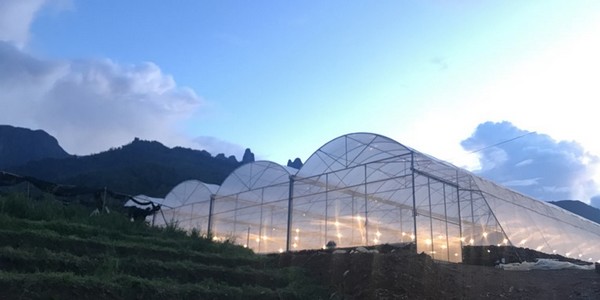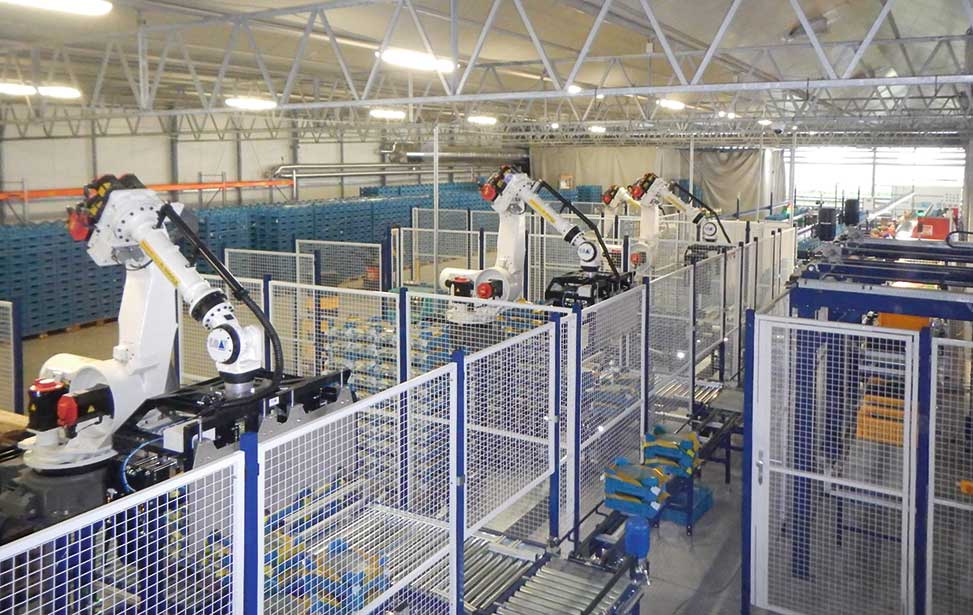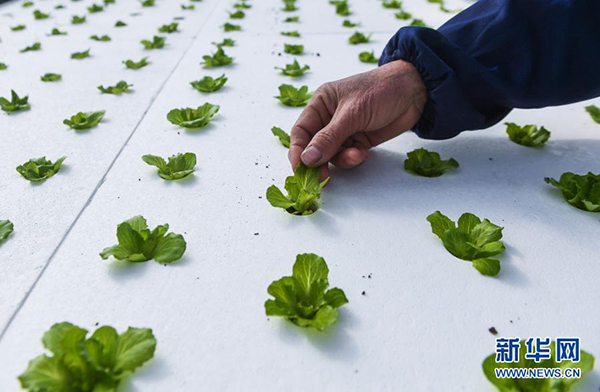Downy mildew of basil, caused by Peronospora belbahri, has become an important disease in sweet basil (O. basilicum) production worldwide in the past decade. Global sweet basil production is at significant risk to basil downy mildew because of the lack of genetic resistance and the ability of the pathogen to be distributed on infested seed. Controlling the disease is challenging and consequently many crops have been lost. Symptoms of basil downy mildew on an infected plant resemble and can be mistaken for a nutrient deficiency, such as nitrogen deficiency. Like other downy mildew pathogens, basil downy mildew almost exclusively sporulates on the underside (abaxial surface) of infected leaves. Dark purplish-brown sporangia are produced on the underside of leaves during favorable weather conditions for disease development. Like other downy mildews, P. belbahrii is an obligate parasite and it is not known to produce oospores, thus it requires a living host in order to reproduce and survive. Therefore, the pathogen can only overwinter in warm, temperate regions where basil will not freeze during cold winter months. The pathogen can survive on living plants in greenhouse production operations that produce basil year round. Under controlled conditions, basil downy mildew was particularly severe when plants were kept wet for 6 to 12 h after inoculation and leaf wetness was needed for at least 24 h after symptom appearance for sporulation with 20°C being optimal for infection and sporulation. At least 7.5 h of dark are needed to initiate sporulation. Exposure to light suppresses spore formation but still allows for sporangiophores to emerge from stomata. In the field or greenhouse, basil downy mildew can develop and spread rapidly throughout plantings during periods of high humidity, mild temperatures, poor air circulation, and extended durations of leaf wetness. The basil downy mildew pathogen can also be spread via contaminated seed where it most likely survives as sporangiophores and sporangia. Little else is known about the etiology of basil downy mildew challenging our ability to make predictions about its development and spread. Thus, the rapid global spread of P. belbahrii has been attributed to the distribution of infested seed. This underlines the importance of developing and implementing seed testing, certification protocols, and standards for the basil seed industry.
Source: https://ahdb.org.uk/











